
All categories
Featured selections
Trade Assurance
Buyer Central
Help Center
Get the app
Become a supplier

(440 products available)





















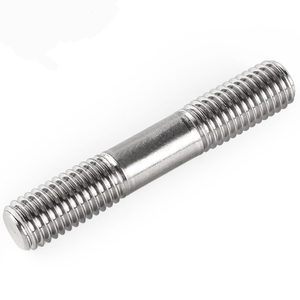

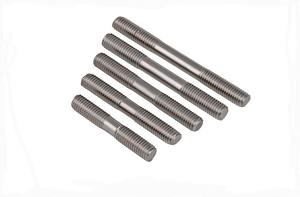















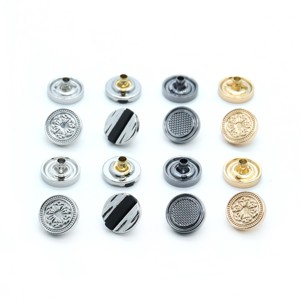
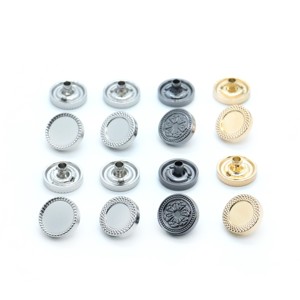
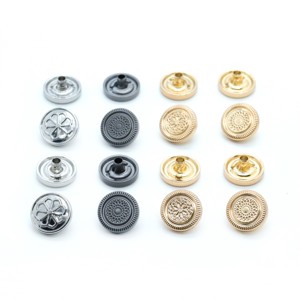

Snap screw studs are accessible in variegated types. They include:
Metal snap screw studs
Metal snap screw studs are notorious for their durability and strength. They are constructed of stainless steel, brass, or aluminum. They fit snugly into high-stress applications like automotive parts or machinery. In addition, the corrosion resistance often associated with stainless steel makes it ideal for environments that are moist or prone to rust.
Plastic snap screw studs
These are lightweight and less risky and highly effective at electrical insulation. They are constructed with less load-bearing capacity compared to metal studs. However, they are a staple in applications where weight saving is highly essential or where non-conductive properties are needed. Common uses incorporate mounting components in electronics, automotive interiors, and other applications.
Adjustable snap screw studs
These studs are designated to allow modification. This makes them ideal for applications that require periodic adjustments in tension or alignment. They are indispensable in textile and automotive industries, where such properties may be vital for fit or performance. Also, adjustable studs may be fabricated using metal or polymer materials. This greatly expands their utility across diverse applications.
High-temperature snap screw studs
These studs are delineated for environments with elevated temperatures. They are supposed to maintain form and function in such extreme conditions. Usually, these are manufactured from specialized materials. They include titanium alloys, heat-resistant plastics, or ceramics. They are applicable in aerospace, automotive engines, and any other environment that is severe and prone to heat.
Micro snap screw studs
These are small-sized stud bolts. Their size makes it suitable for applications that require minute components. Examples are in medical devices, electronics, or precision instruments. Despite their size, these studs are manufactured to carry out exacting tasks and fit into compact spaces seamlessly.
Apart from the studs' variegated types, the materials used to make bolts and screw studs are indispensable in determining their properties. They include:
Stainless steel
Usually, stainless steel is the most prevalent material for snap screw studs. It offers a marvelous balance of strength, corrosion resistance, and durability. In addition, due to its ability to withstand hostile environments such as moisture and chemicals, it is applicable in industries that are varied. They include automotive, marine, and electronics. Also, the long life and reduced maintenance requirements make stainless steel an indispensable option for users in need of dependability.
Brass
Brass is favored for its resistance to corrosion and excellent electrical conductivity. This makes it ideal for snap screw studs in electronic and electrical applications. Normally, brass studs come with a golden hue which makes them visually aesthetic for ornamental applications as well. Though not as strong as stainless steel, the properties of brass correlate to low wear and a long lifespan. This makes it ideal for specialized uses where moisture presence is a likelihood.
Aluminum
Aluminum provides lightweight snap screw studs. This property makes the material ideal for applications in aerospace and automotive industries where weight is of the essence. Normally, aluminum studs come with an outstanding strength-to-weight ratio. Also, they offer adequate resistance to corrosion. In addition, they are sometimes anodized to enhance their durability further and aesthetic appeal. Also, the use of aluminum often results in improved fuel efficiency and easier handling. Hence, this makes it indispensable in the specialized application realm.
High-strength plastics
Usually, high-strength plastics such as nylon or polycarbonate are delineated for snap screw studs in applications requiring non-metallic materials. Often, these plastics are lightweight, and they have a good resistance to chemicals and electrical insulation properties which are an added advantage. Also, they are particularly useful in electronic devices, automotive interiors, and other applications where metal component conductivity would pose risks. Besides, advanced polymer materials come with enhanced UV resistance and temperature stability. This greatly expands the stud's usability to outdoor and high-heat environments.
Snap in screw studs are designed with variegated specifications. Also, they have unique features that make them suitable for distinct applications. Here is a breakdown:
Material
Usually, snap screw studs are made of stainless steel, brass, aluminum, or plastic. The materials commonly used provide diverse properties. This includes durability, corrosion resistance, and weight considerations. Ideally, the material selection is dependent on the application requirements. They include load-bearing capacity, environmental conditions, and electrical conductivity.
Size and dimensions
Commonly, snap screw studs have a diameter range of 4-12 mm and a length range of 10–50 mm. Usually, stud sizes vary greatly depending on the application needs. These include electronics and heavy machinery. The dimensions of the studs are delineated to ensure compatibility with standard screw sizes. This allows for easy installation and interchangeability.
Tensile strength
Often, the tensile strength of snap screw studs varies based on the material and treatment used. Usually, stainless steel studs have tensile strength of up to 1,000 MPa or more for high-strength applications. Additionally, brass and aluminum studs have lower tensile strengths. Nonetheless, they are adequate for lighter applications. They include electronics enclosures or interior components.
Surface finish
Normally, the surface finish of snap screw studs affects both aesthetics and performance. Usually, options include polished, galvanized, or anodized coatings. They serve distinct purposes. They improve corrosion resistance and enhance the material's appearance. Also, anodized aluminum studs come with enhanced durability for outdoor applications. On the other hand, galvanized coatings provide protection in construction environments that are hostile.
Easy installation
Regularly, snap screw studs are designed with user convenience in mind. Usually, many variants feature integrated snap fittings which enable quick and secure attachment with minimal tools required. Also, this facilitates efficient use of time. Particularly, in production settings where assembly speed is indispensable, the ease of installation plays a key role in reducing labor costs and increasing productivity.
Versatility
Application-wise, these studs range from automotive and aerospace to electronics and industrial machinery. Commonly, their adaptability arises due to their customizable attributes. They include variegated material, sizes, and finishes. Therefore, they meet distinct demands across heterogeneous industries seamlessly.
When buying female screw studs for sale, several factors should be considered. Here are some of them:
Application
Snap screw studs are delineated for distinct applications and come in handy in multiple materials for such use. For instance, stainless steel screw studs are suitable for heavy applications since they can withstand tension and resist rust. On the other hand, brass screw studs are preferred in electronic devices due to their conductivity. An understanding of the application will help in choosing a stud that meets the requirements.
Compatibility
Customers will first research the existing equipment or materials before buying snap screw studs. This includes checking the diameter and thread size of the stud and ensuring the compatible materials of the stud and equipment. More importantly, there is no need to customize tools or equipment if compatibility is maintained. This helps in saving costs and reducing prolonged downtime.
Load capacity
Different screw studs have distinct tensile strengths. Therefore, load capacity refers to the maximum weight or force an object can carry. The stud used for heavy machinery use should be strong enough to carry such heavy loads. For light applications, customers can settle for lighter materials. In addition, opting for materials that are strong like titanium and stainless steel for their high tensile strength will serve them well.
Corrosion resistance
Although corrosion may not affect customers directly, it can be devastating with such elements if left unattended. Therefore, it is advisable for customers to buy screw studs made of corrosion-resistant materials like stainless steel and aluminum. Furthermore, one should assess the working environment. If it is wet, humid, or chemically hazardous, go for corrosion-resistant studs.
Cost and quality
Customers will go for quality products that will not break the bank. Therefore, they should weigh the benefits of various materials against their cost before deciding. If the application demands quality, customers should purchase high-quality corrosion-resistant materials. In the long run, going for these materials pays off since they are durable.
Industry standards
To ensure safety and performance, customers must adhere to the required standards in their specific industries. Thus, customers must ensure that the screw studs they purchase meet the relevant requirements. Besides, there might be discounts on bulk purchases. So, customers intending to purchase bulk snap screw studs should ask for discount deals.
There are several types of maintenance one can do on snap screw studs. They include:
Prevention
Preventive maintenance is all about preventing corrosion. The corrosion-resistant snap screw studs are made of strong materials such as titanium and stainless steel. Therefore, preventive maintenance involves regularly checking the metal's integrity for signs of rust or corrosion. If one notices any, they immediately rectify them by using touch-up paints or anti-corrosion sprays. Also, having regular inspections helps identify and rectify potential issues and increases the screw stud's life.
Preventive maintenance
Preventive maintenance is all about prevention. It involves regularly checking the metal's integrity for signs of rust or corrosion. If one notices any, they immediately rectify them by using touch-up paints or anti-corrosion sprays. Also, having regular inspections helps identify and rectify potential issues and increases the screw stud's life. As such, there will be no need for repairs.
Corrective maintenance
Corrective maintenance involves directly fixing problems that affect the function of snap screw studs. The first step is to assess the extent of wear or damage. If the stud is lost, one can fix it by repairing or replacing parts that are broken or wear down. Additionally, damaged screw studs refer to replacing worn-out ones with new ones. One can avoid frequent repairs by investing in high-quality, durable corrosion-resistant materials such as screw studs for sale.
Idemic maintenance
Traditionally, one of the ways to reduce the impact of wear and tear on screw studs is by regularlubrication. In less frequent applications, light general-purpose grease or oil goes a long way in ensuring the studs last long. Where lubrication might cause more harm than good, frequent cleaning of dust and other particles before they settle on screw studs works fine. In cleaning, use a soft cloth or an air blower. This way, it reduces the likelihood of abrasion or material build-up.
Manual maintenance
Remote workers work hard to keep the set-up office equipment in perfect condition. They use hardware protection caps to cover exposed screw studs. This not only protects the hardware components but also protects the workers from any dangerous exposed parts. These screw caps are made of soft plastic. That's why they don't damage the stud or surrounding parts, but they're tough enough to protect against bumps, dirt, and light abrasion.
Studs are used in joining parts that have provision for screw fastening. They offer a simple and effective way of creating a permanent joint that does not occupy too much space. Also, they are used in a variety of applications from industrial to mechanical reliability.
Screw stud mountings can be made by fastening bolts or screws to the base or floor of a vehicle. Studs create a secure attachment point for components. This allows for easy installation and adjustment.
Screw studs provide a permanent joining method thus saving on space. They also provide mechanical reliability. This makes them ideal for heavy applications. They provide strength and stability. Also, being made of durable materials, they have longevity and resistance to corrosion.